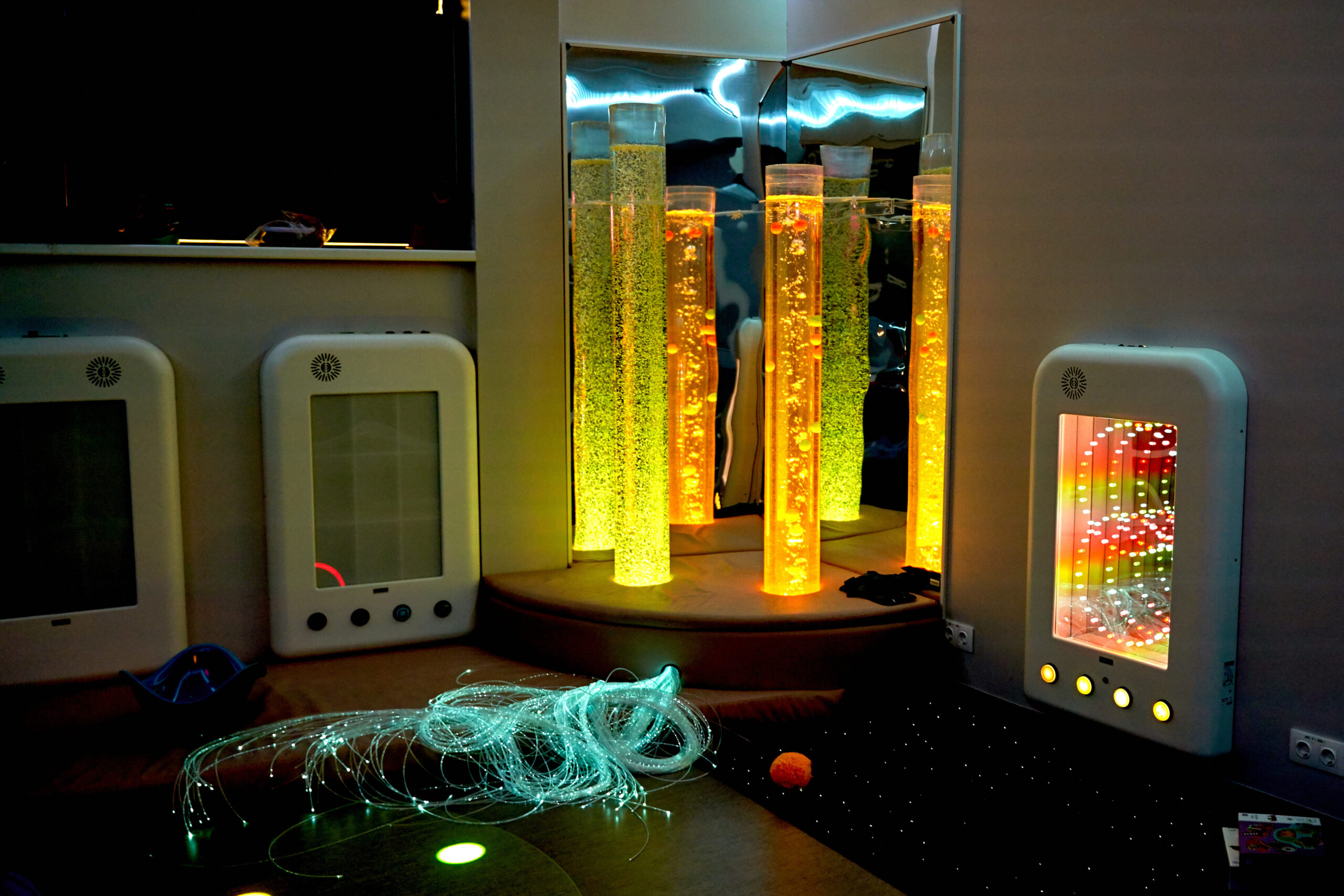 Sensory rooms are becoming quite common place, and they are an important part of a sensory diet for children with autism. A sensory diet is how a child consumes sensory activities. We are going to talk about:
Sensory rooms are becoming quite common place, and they are an important part of a sensory diet for children with autism. A sensory diet is how a child consumes sensory activities. We are going to talk about:
The top 5 reasons sensory rooms are important for children with autism
- To help children learn to self-regulate, which ultimately improves focus – As a child’s body becomes more regulated, often their awareness increases as well, likewise, their focus increases at the same time.
- Improve visual, auditory and tactile processing (gross and fine motor skills) – Sensory rooms include anything from rock walls and lycra swings to sensory bins and fidgets. They often resemble a physical therapy room because muscle movement and balance can be a challenge for those with sensory issues. Gross and fine motor work often helps with body and brain regulation.
- Calm and comfort – The space can allow them to regain control of their emotions. It is a low-stress, fun environment that typically offers the needed stimuli the body is searching for. A white noise machine, aromatherapy diffuser or other soothing items could be great additions.
- Stimulation – For some, sensory stimulation may be needed to bring awareness to their body and awaken their senses to explore the world around them.
- Socialization – Sensory rooms can be a location where children practice interaction with others. It is a safe, stress-free space open to discovery.
Sensory integration is the link between the brain and our behavior, for children with autism the way the brain processes experiences can be a source of distress and discomfort. If we can work on sensory integration, something “we” typically overlook, “we” can help children with autism process sensory stimuli and help regulate their systems.
If you are thinking about creating a sensory space in your home, I strongly encourage you to do so, your child will benefit tremendously! I recommend reaching out to your child’s therapists (OT, PT, BT) for recommendations on the best equipment and devices for your child. Remember, you can start small, add a sensory bin (you can buy one pre-made for around $20-40) or fidgets ($1-5).
I would love to hear if you have a sensory space in your house, what is your child’s favorite toy or activity? Share in the comments.


